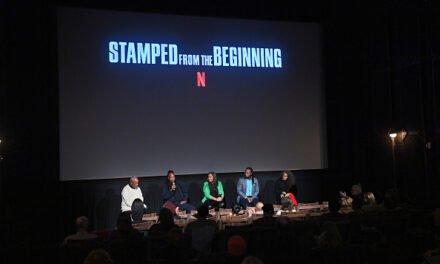
This series was designed to illuminate how we in the DEI world need to acknowledge and change our complicity in upholding the status quo — from how we interrogate and interpret DEI related data, to how we carry out HR and DEI work. Last week Brittany J. Harris provoked internal DEI practitioners to become Chief Disruptive Officers to effect change, and the week before Christina Wang encouraged the reimagination of the role of HR from policy enforcement officers who give lip-service to performative DEI efforts that unwittingly perpetuate systemic racism.
In this post, I want to highlight the role of the CEO and other people in power. I am seeing some very encouraging racial justice work initiated and driven by CEO’s calling for collective accountability. These organizations empower their DEI and HR leadership as full interdependent partners with their own voices, implement aggressive internal anti-racist strategies, and make a broader impact by influencing leaders of other organizations to be accountable.
I call these leaders Power Brokers. It is a term that I am contrasting with allies. Allies are important but are not always in a position to influence systems. A power broker is typically an industry insider who is familiar with other important individuals and groups. By using these networks, they are able to exert influence and make decisions that influence systems. Racial justice power brokers can call for collective accountability.
A power broker is an industry insider who is familiar w other important individuals and groups. They are able to exert influence and make decisions that influence systems. Click To TweetHow is collective accountability defined from a social justice perspective? Collective accountability or responsibility, also referred to as collective guilt, is a social justice concept emphasizing that we are responsible for other people’s actions by tolerating, ignoring, or harboring them, without actively collaborating in these actions. The concept is not to lay blame for past harm, but rather embrace the idea that even if we did not personally cause the harm, we all have the responsibility to remedy it.
While it is heartening to see all of the recent statements from corporations denouncing racism and vowing to take action, there is a need to focus on collective accountability and collaboration both internally and externally for real systemic change.
While it is heartening to see the recent statements from corporations denouncing racism and vowing to take action, there is a need to focus on collective accountability and collaboration both internally and externally for real… Click To TweetInternal Collective Accountability
While it is imperative that the C-suite be held accountable for anti-racism and inclusive cultures, most overt racist behavior does not happen at those levels. Collective accountability starts with personal accountability. And to the extent that there are lapses in accountability anywhere in the system, it negates the possibility of collective accountability, and thus the likelihood of creating a culture that is truly inclusive (“only as strong as the weakest link.”) So often I hear that middle management blocks diversity and inclusion in organizations. Senior leaders have the power not to let that happen. It is not a valid excuse. Senior leaders have the power and must use their power to disrupt all behaviors that are counter to the culture of inclusion and equity they espouse.
So often I hear that middle management blocks diversity and inclusion in organizations. Senior leaders have the power not to let that happen. It is not a valid excuse Click To TweetWhile senior leaders hold the ultimate power for systemic change, all employees should be explicitly held accountable for anti-racist and inclusive environments. Many organizations have zero tolerance policies. While these are necessary from a compliance perspective, there are many behaviors, such as microaggressions, that fall outside of explicit behaviors covered by zero tolerance policies. Here are three specific and practical steps that organizations can take to hold the collective accountable:
1.) Make collective accountability for anti-racism and inclusion a core value for the organization.
2.) Implement very specific anti-racist behaviors for the entire organization and educate every employee on what they are, why they are important, and the consequences for not adhering to them. The learning experiences on anti-racism should be mandatory, ongoing, and embedded into the fabric of the learning philosophy. The organization should prioritize developing skills for:
The learning experiences on anti-racism should be mandatory, ongoing, and embedded into the fabric of the learning philosophy. Click To Tweet- Self-development, including self-education, self-reflection, and personal change.
- Learning how to respond to interpersonal and group issues; for example, responding to biased comments, addressing inequitable group dynamics, and creating culturally inclusive work and learning groups. This may include allyship.
- Ability to create, critically analyze, implement, or advocate for organizational norms, policies, and practices that are equitable and inclusive.
- Creating societal change by being able to work collaboratively with others to foster social justice. This may come in the form of volunteerism or other community engagement.
3.) Include inclusive behaviors on all performance reviews not just for leaders. For example, to what extent does the employee:
- Embrace, integrate, and adapt to different cultural styles.
- Deal with conflict due to cultural differences and the dynamics of inequality.
- Engage effectively in dialogue about social identities, diversity, and oppression issues.
What Are Companies Doing to Promote Collective Accountability Beyond Their Boardroom?
Price Waterhouse’s CEO Tim Ryan conceived the CEO Action for Diversity and Inclusion Initiative several years ago, calling for a CEO-driven business commitment to advance diversity and inclusion in the workplace. More than 1,000 companies are a part of this effort. To be included, companies must agree to take specific actions in areas of hiring, training, work-life balance, etc. They are required to be transparent and share on the CEO Action for Diversity and Inclusion website what they are doing and accomplishing. This fosters transparency and accountability. While I don’t think the effort lives up to its potential, it is an example of an attempt to promote collective accountability.
More recently SurveyMonkey, Intuit, Slack, Zoom and other companies advocated for organizations to hold their vendors and partners accountable for diverse representation at all levels and in their vendor relationships. SurveyMonkey is providing the survey tool template that organizations can use. While this is not a new concept — known as tier two supplier diversity — what is different is that the call is coming from CEO’s and not from procurement.
What Should/Can Industries Do to Demonstrate Collective Accountability?
There are numerous industries that historically and continue to perpetuate harm in Black and Brown communities, including tobacco, alcohol, and the media just to name a few. The tobacco industry has a long history of going to great lengths to target the African American community, especially young people. African Americans are more likely to die from tobacco related deaths than any other ethnic group according to the Campaign for Tobacco-Free Kids, an advocacy organization working to reduce tobacco use around the world. Additionally, Black youth between the ages of 12 and 20 are disproportionately exposed to alcohol advertising specifically targeted to them.
The media is guilty of portraying Black and Brown people more negatively. For example, studies show that the media reports of murders, thefts, and assaults where Black people were suspects far outpaced their actual arrest rates for such crimes. The media also portrays Black suspects as more threatening and scarier than whites by showing mug shots of Black suspects more frequently and perpetrating a narrative of white victimization. In addition, a comprehensive study of television, print, and online media showed that Black families are disproportionately portrayed as dependent and dysfunctional — while white families are more likely to be depicted as stable and well-functioning.
Industries must be collectively held accountable for the harm that they continue to perpetuate against Black and Brown people by discontinuing these practices and even offering reparations for past harm.
Industries must be collectively held accountable for the harm that they continue to perpetuate against Black and Brown people by discontinuing these practices and even offering reparations for past harm. Click To TweetSome industries are finding that positively targeting Black and Brown communities improves overall business outcomes. “Profits involving social purpose represent a higher form of capitalism — allowing society to advance and companies to grow” according to a report by Policy Link and FSG. For example, in financial services PayPal and Regions Bank, and Brown’s Super Stores developed new products such as using alternative forms of credit assessment and locating stores in food deserts to reduce barriers and better serve the needs of people of color.
Collective accountability is necessary to eradicate systemic racism. It requires understanding the history and racialized impacts of the organization and the industry, repairing historically harmful relationships, and changing inequitable business practices.
Collective accountability is necessary to eradicate systemic racism. It requires understanding the history and racialized impacts of the organization and the industry, repairing historically harmful relationships, and changing… Click To Tweet


















